As the realm of Final Fantasy XIV rises up from the ashes, join Corey Jenkins as he shares his adventures of the newly revived land of Eorzea
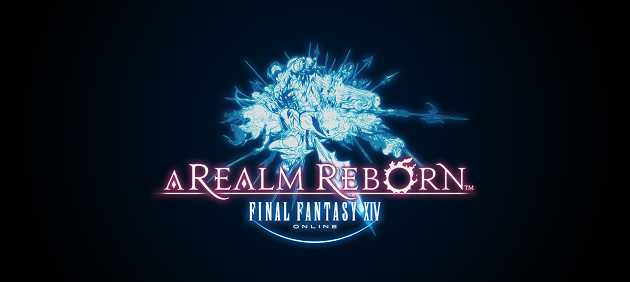
Dating back to Final Fantasy I, II, VI, VII, VIII, IX and some of the more recent titles, Final Fantasy has always held a special place in my heart. With its great stories, tactical combat and mystical environments; it was like a series that could never be tainted. Then came Final Fantasy XIV.
Square-Enix’s first attempt at Final Fantasy XIV was a game shrouded in infamy due to the issues it launched with and continued to retain throughout its brief life-span. Copied environments, frustrating combat systems, a laggy server-bound menu UI and gorgeous un-optimized graphics that nearly shattered any low end PC that attempted to install the game. While only the most dedicated fans stuck around, the majority of the player base ended up leaving to find other games or go back to the earlier more successful installment, which was Final Fantasy XI.
While Final Fantasy XIV did manage to keep enough players on board for the game to function, Square-Enix knew that they needed to do better. Thus, Final Fantasy XIV: A Realm Reborn was created. When this new title was announced most assumed it would be an expansion of some sort to the original. It was quickly confirmed that A Realm Reborn would be a complete remake of the original title—a game that would, with the help of its new Game Director Naoki Yoshida, rise from its own ashes and be reborn in to something greater. That was the hope anyway; however, in order for this to happen the original had to be taken offline.
To the dedicated fans who decided to stick around, I can only imagine how frustrating it must have been to be told “you won’t be able to play our game for at least half a year, if not longer, while we fix our mistakes.” While I’m sure most of the players who were still logging in every day had mixed feelings about not being able to play their game while it was remade into something better; leave it up to a Final Fantasy game to actually tie-in its own destruction to the main story. With a cool event and an epic final CG trailer that would leave even non-Final Fantasy fans with chills and a grin on their faces, people still playing the game and even those who weren’t, wanted to believe it could be remade into the Final Fantasy they once knew and loved.
As many of you know (and after hopefully watching that epic trailer for yourself) Final Fantasy XIV: A Realm Reborn is currently in closed beta. After having a chance to jump in at the start of Beta Phase 3 myself, I’m here to bring you my first impressions of A Realm Reborn. Keep in mind that this game is still in Beta and as we all know MMORPGs are vast creatures that need a lot of play time for a proper full length review, but even though I only managed to get to get a little past level 15, there is still a lot of information to pass on, so let’s dive in!
Beginning The Final Journey…Again!
Upon logging in to Final Fantasy XIV again after these many months I was immediately greeted with a sleek, responsive, character creation UI and the subtle chimes of the Final Fantasy hymn that we’ve all come to recognize. Already I was met with a breath of fresh air and the Final Fantasy vibe; while having been busy with many other titles, I had gone many months without experiencing. It was like a welcome mat had been laid out for me.
Compared to most games, character customization in XIV is pretty much what we’ve grown accustomed to in today’s MMO market. However, one thing XIV gets right with this process is offering you a healthy number of unique customization choices, without getting too heavy on the sliders. Things such as your race, body size, body type, face color, hair color, scars, eyes, eye color and even your characters combat voice were all available to customize within the anime-centric style that players have come to associate the series with. 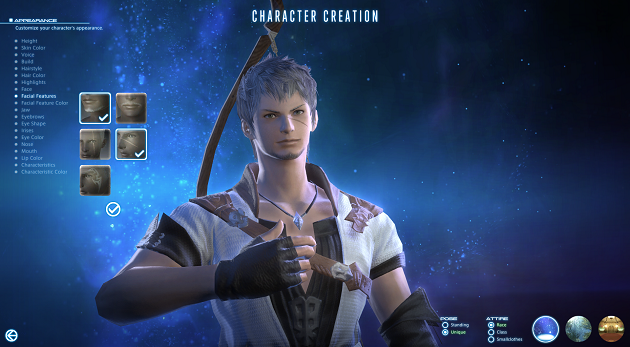
After the basics were out of the way, I was then asked to choose my character’s birthday as well as what deity I would be born under. While these choices didn’t seem to have an effect on the main story, as far as I could tell, it’s possible that they get taken into account later in the game. Once my birthday and deity were chosen I was ready to pick a starting class. I chose the Pugilist, the agile fast-hitting grappler.
Class selection in Final Fantasy works a bit differently compared to most MMOs on the market right now. Upon reaching level 10 and completing the initial class quest—more on that later—you will be able to switch between any of the 19 classes freely, simply by changing out your weapon. On top of that, each combat class has at least 1 advanced class option available to it, referred to as a “Job”. Crafting professions in Final Fantasy are also considered classes as well and are included in the 19 available classes I mentioned earlier. Keep an eye out for an in-depth crafting article by our own Michael Branham.
Upon completion of my character I was greeted with a series of somewhat lengthy cutscenes which are prevalent in the Final Fantasy series, but may take new comers by surprise. Final Fantasy—even in MMO form—has a lot of story to be told, and it’s not afraid to throw it in your face early on. With that being said, I’m actually someone who enjoys vast amounts of story-telling and lore in every game I play and am probably one of the few who takes the time to read all of the quest text. If that’s not your thing though, they do allow you to skip through all of the dialogue.
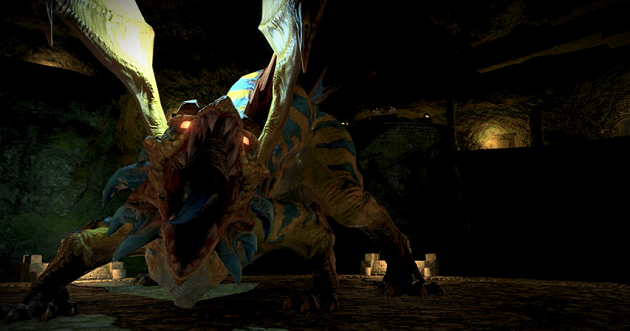
Once the story-telling was done and the stage had been set for some mysterious arch-nemesis figure to confront me along my journey, I was dropped off at the city gates of Ul’dah, one of the possible starting cities that players get introduced to early on. Character movement on the keyboard was the standard WASD, however, the newly added “spacebar to jump feature” made everything feel a lot less restrictive and natural compared to the original version. The big thing that stood out to me, however, was how smooth the game felt and how it ran. If I could come up with a clever metaphor to compare how silk feels on the skin and how that tied in to my frame rate I would, but for now all I can say is that it was a huge leap from the original version. While my gaming rig is closer to the high-end spectrum, I’d even heard from other players that most low end machines were performing surprisingly well.
I’m not sure what Black Mage Square-Enix hired on to the programming team, but this definitely felt miles ahead of the original. I have heard, however, that PS3 users aren’t blessed with the same frame rate as their PC counterparts.
Hopefully this is something that will be addressed before launch, but for now if you’re deciding between console and PC, PC is definitely the way to go for the smoothest experience. After spending the first few minutes of my re-entry to XIV jumping around amazed at how smooth it was (not to mention how amazing everything looked) I finally remembered that I had a game to play, so I proceeded to venture toward my first quest.
The Rebirth of Traditional Questing
Immediately after stepping foot in front of the gates of Ul’dah I had bumped into an NPC with the oh so familiar “!” over his head and without beating around the bush I will say that, yes, Final Fantasy XIV does have a lot of traditional questing. Many of the quests start with you getting a quest with an NPC who has an “!” over his or her head and proceeding to collect X of Y, killing Y out of X creatures, or talking to person A, B or C. So there’s nothing really new and ground breaking here in terms of questing, but I don’t necessarily think that this is a bad thing for the game. Traditional questing allows players familiar with MMOs or even most regular RPGs to quickly get in and understand what’s going on. This is something that the original game lacked with its guildleve system, which was essentially traditional questing masked in an overly complicated coat of paint.
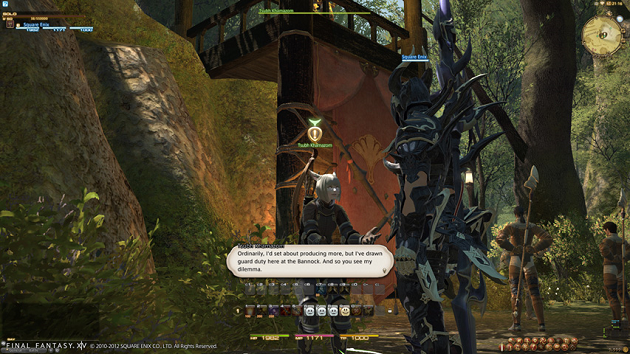
While traditional questing is definitely a safe way to go, I think it has also helped pave the way for XIV to sprinkle additional layers of content in other areas of the game. For example, aside from just regular filler quests, XIV does offer cool main story quests as well as class specific quest lines.
The main story quests are exactly what they sound like and help bring the main story of XIV to life. Class quests act as side-stories that are specific to your class, but also teach you the basics of how to play that class. While early class quests are pretty simple and along the lines of “go use this skill chain on a monster 3 times” they get increasingly more difficult and upon their completion will allow you to unlock powerful class abilities and class-specific gear. The inclusion of the main story quests are pretty standard in most MMOs these days but, including class specific quest-lines are something that I think many players enjoy in their games and gives a sense of “class pride” if you will.
Personally, while only completing the first initial class quests I found the class story to be equally as interesting as the main story and wanted to see more of it after getting a hint that a rogue member of the Pugilists Guild was lurking about. For my level 15 quest I would also receive a classy new chest piece and a cool new class ability to keep me interested in following the road to becoming a Master Pugilist. While I can’t speak for how interesting the other class’s quests were, I can say that they offer additional content that I think most players will enjoy.
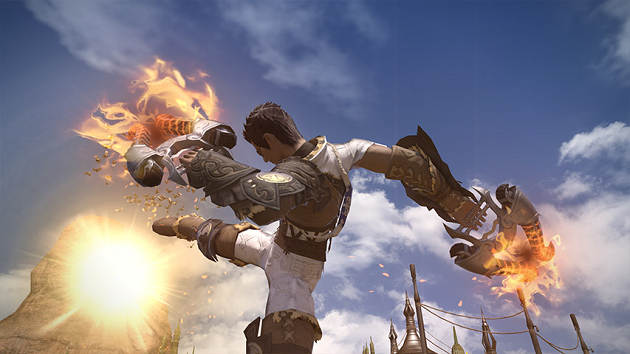
The second layer of the XIV questing system is the return of guildleves. However, this new guildleve system is a lot more “new player friendly” than its original conception; acting more along the lines of daily quests that can be completed 5 times a day on varying levels of difficulty. While they do offer bonus exp. and rewards for leveling, they didn’t seem to be forced on you if you didn’t want to do them.
Lastly, as far as questing goes, is the Full Active Time Event system, or FATE. Dynamic events seem to be the new hotness in MMOs, and the XIV FATE system is essentially just that. As you’re out questing FATEs will occur around you and you’ll be notified as soon as you’ve entered one. Your map will also indicate where nearby FATEs are taking place. Just like in other games such as Guild Wars 2, FATEs scale in difficulty based on the number of players participating and will also reward players based on their contribution. Additionally, players who are above the recommended level for a FATE will be asked if they would like their level to be scaled down. While you don’t have to choose to be scaled down, you’ll get little to no reward for participating in a FATE event above the recommended level. So while level synching makes it more challenging, it also gives you better loot.
Killing Stuff, Final Fantasy Style
While there are a few noncombat quests scattered about, the majority of RPG players know that questing usually entails killing monsters of some sort, or fighting something or someone in some way.
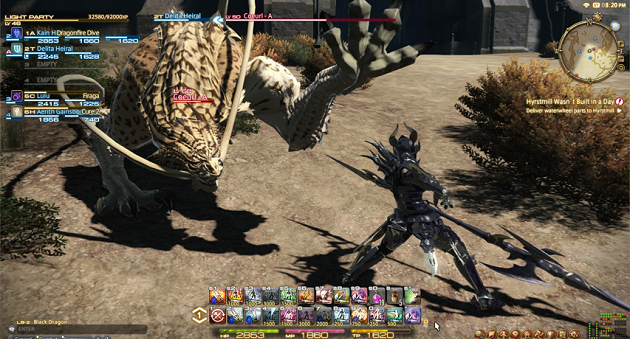 One of the first things I hear people say about the combat is that it feels too slow or static and they wouldn’t be completely wrong in that regard. Compared to most current MMORPGs that have begun adopting the ways of more action and movement-based combat; Final Fantasy XIV does feel a bit slower and more static.
One of the first things I hear people say about the combat is that it feels too slow or static and they wouldn’t be completely wrong in that regard. Compared to most current MMORPGs that have begun adopting the ways of more action and movement-based combat; Final Fantasy XIV does feel a bit slower and more static.
However, I will say that Final Fantasy fans should know that the series has never been about fast-paced action combat to begin with. In fact the upcoming Final Fantasy XV is one of the few titles in the series to really go that route. Final Fantasy has always been about slower more tactical turn-based combat. And while XIV is not fully turn-based I do think that they are going for the more tactical approach which long-time fans of the series are used to; offering unique abilities and ways to approach each encounter that also play off of how members of your party are fighting as well.
Starting off as a level 1 pugilist I only had a single combat ability on my bar, which was a basic 3-hit punch, along with a sprint that allowed me to travel faster. While I did have my standard auto attack accompanied by my one ability, combat did indeed feel a bit slow at first, even with the cool fighting animations. A few levels and a couple of quests in, I started to obtain more abilities. At about level 8 or 9 I started to see how deep the combat system could potentially go, even while soloing.
The main combat mechanic for Pugilists is their stances. After using certain abilities it puts you in a specific combat stance but, if you’re not in the stance required to use a certain ability, you can’t use that ability. In practice I would use my first skill that didn’t require a stance. This would then put me into my “Raptor Stance” which allowed me to use my second ability in the chain. After this second ability fired off I was then put into a third stance and was able to use my third and final ability in the chain which was my strongest and also gave me an attack speed increase.
As a Pugilist I didn’t do as much burst damage as a Marauder; however, what Pugilists lack in raw damage they make up for in speed, so getting my combo chains off was extremely important to playing the class properly. You might already start to gauge how complex skill-chaining as a Pugilist could become at higher levels, the abilities don’t stop there.
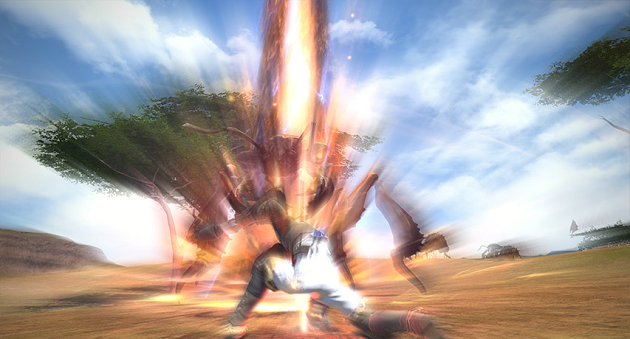
As a Pugilist I also received on-use abilities that weren’t attached to my global cool-down. I received an ability that allowed me to dodge more often, which was then paired with another damaging ability that I was able to use only when I dodged. So while chaining abilities on a mob that hits like a little kid with the flu sounds easy, keeping focus on using your abilities while chaining your attack skills on a monster that could cleave you in half is another story. It’s almost like an intense game of dance revolution, but with your fists.
While other classes had unique mechanics of their own the fundamental complexity and tactical nature of combat remained the same. It starts off slow, but the execution of combat and the difficulty increase of monsters makes combat a lot more tactical and engaging as you gain access to more skills. The tactical nature of XIV’s combat isn’t just bound to solo play. It comes into effect for group play as well.
Once you hit level 10 you have access to your first set of “guildhests”; part of the guildleve mission system meant for groups of players to complete and increase in difficulty the higher you go up in level. The initial guildhests are designed for groups of 4 players, which form a “light party”, and teach you how grouping works in Final Fantasy XIV. While light parties seem to be the standard party size, groups can become larger than that for the more difficult encounters and instanced raid-like dungeons in the game.
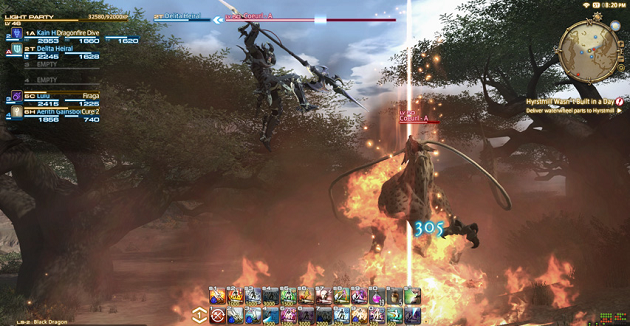
As the four of us gathered in a group, I immediately noticed a change in my UI. The obvious things were there such as my party members’ health, MP, TP etc. But we were also receiving stat bonuses by having a party filled with different class variations; a clever mechanic to help encourage grouping even with fewer than 4 members involved.
The coolest thing about grouping has to be the “Limit Break” feature that unlocks once you’re in a party of 4 or greater. While a light party or above, your party gets a Limit Break gauge which can be filled up based on several factors such as performing well in a fight or having a healer make a clutch heal on the tank at the last second. And, at least at low levels, filling that bar was no trivial task. However, If you manage to fill that limit gauge bar, your party gets access to a visually amazing and powerful group ability otherwise known as the Limit Break. What that Limit Break actually does though is ultimately determined by the person who activates it.
If a melee damage dealer activates it, it will do a high burst single target attack, if a tank activates it, it does a more defensive ability, if a ranged damage dealer activates it, then it turns into an AoE and if a healer activates it, it then becomes a powerful healing spell. So you can see the complexity of the system and how communicating and using it at crucial moments in the correct way, determined by each individual encounter, can prove to be rather engaging and challenging.
While my group did not actually get to see this being done first-hand you can check out the XIV limit break video below.
Moving back toward the basics of group combat, XIV uses the standard “holy trinity” system with a Tank, Healer and Damage Dealers. The first two guildhests are designed to teach you the basics of that system. They were a bit forgiving at low levels since our Gladiator tank had absolutely no idea what tanking was. Our first guildhest commenced with monsters every which way, the heals kiting and healing, and another Pugilist and me running around franticly trying to kill mobs and act as “off-tanks” to our more squishy robe wearing healer friend. The movement animations while getting off melee abilities could be a tuned in a lot more I think, but all in all it was a pretty fun and fast paced first experience.
Going in, I think the designers knew that many Final Fantasy fans may not fully grasp the concept of what a tank is supposed to do, since the second guildhest was almost made specifically for tanks to learn how to pick up aggro. Judging by how our initial hest went, it would have been nice if the “how to tank” hest was first, even though we managed to complete it. This hest went a lot better though, having the tank pick up a main boss and throwing adds a few at a time for him to grab as well; compared to the boss and the adds all at once like last time. This wasn’t anything too difficult, but already I could see some of the fundamentals I used while soloing at the starting levels begin to take form in group play as well.
The Verdict
Overall, my gameplay experience in Final Fantasy XIV: A Realm Reborn was a vast improvement over its original. The story-heavy, cutscene-filled quests, and tactical combat leads me to believe that Square-Enix is aiming to please the Final Fantasy crowd above all else. And while I definitely don’t think that is a bad move for them with XIV being a solid game, I don’t see anything that would really set this game apart from most MMORPGs on the market right now besides the Final Fantasy label. With that being said, I have definitely enjoyed a solid MMO experience from this game so far and would recommend people who are at least somewhat interested in the game to check it out. Final Fantasy XIV has undoubtedly earned its place back in today’s MMORPG market.
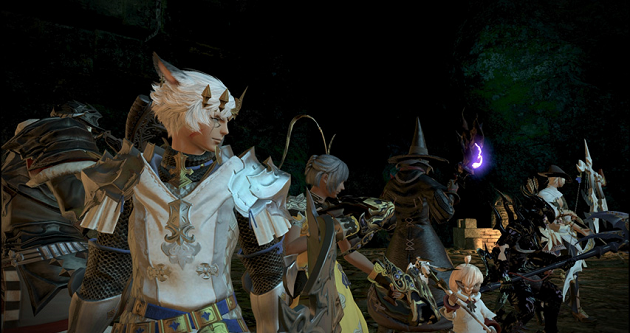
Final Fantasy XIV: A Realm Reborn will be launching this summer on August 27th. For more information on Final Fantasy XIV:A Realm Reborn be sure to head on over to the official FFXIV website and be sure to also keep an eye on ZAM for more FFXIV news updates!






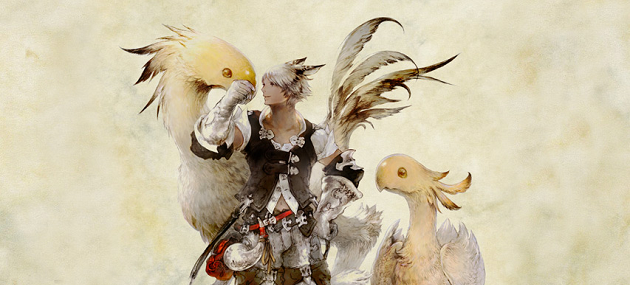










 One of the first things I hear people say about the combat is that it feels too slow or static and they wouldn’t be completely wrong in that regard. Compared to most current MMORPGs that have begun adopting the ways of more action and movement-based combat; Final Fantasy XIV does feel a bit slower and more static.
One of the first things I hear people say about the combat is that it feels too slow or static and they wouldn’t be completely wrong in that regard. Compared to most current MMORPGs that have begun adopting the ways of more action and movement-based combat; Final Fantasy XIV does feel a bit slower and more static.










